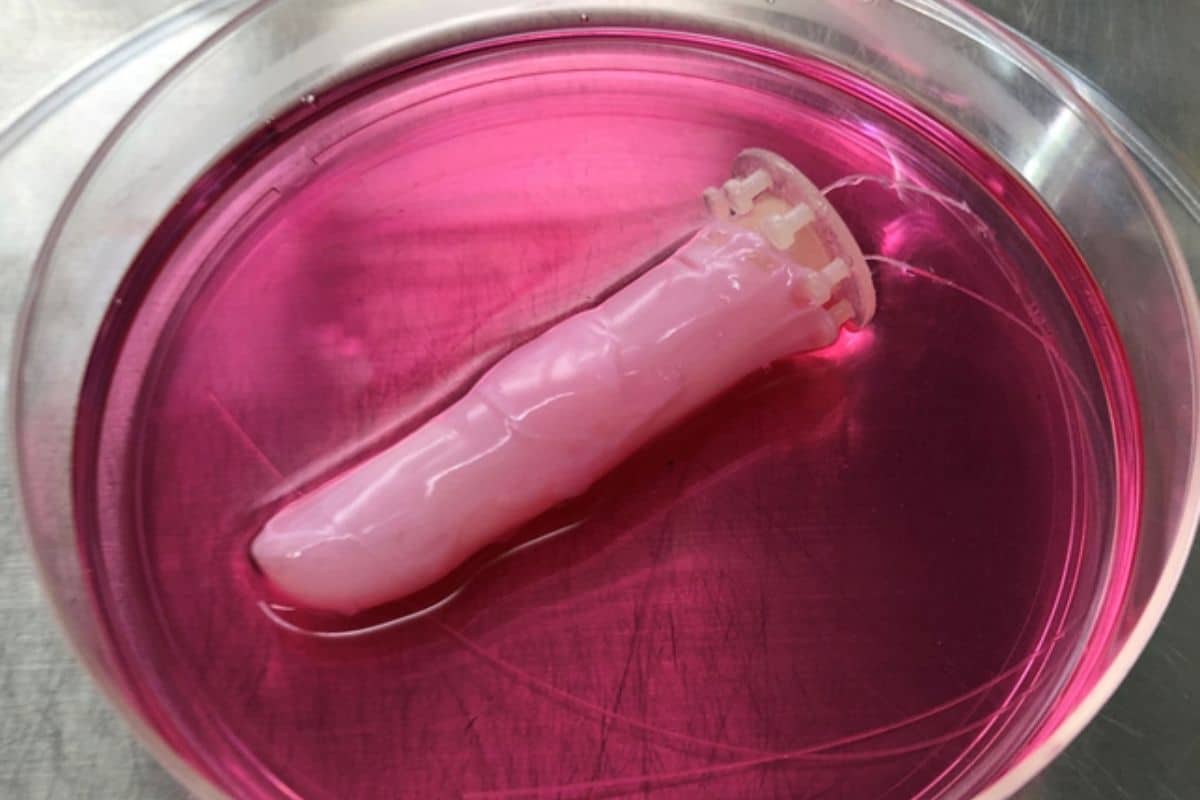
It is a first step towards robots that look just like humans.
Many existing robots have human characteristics. Think arms, legs and a face. Yet these robots don’t really look like us yet. This is mainly due to the fact that in many cases they are made of metal. However, researchers allow a new study see that it can be done differently. This is done by coating a robot finger with human cells, making it look fearfully close to our own fingers.
Almost real
Making robots look ‘just like real’ is an important priority for researchers who build so-called humanoid robots. Such robots often have a body shape that resembles that of a human, but are still clearly recognizable as a robot today. The intention is that humanoid robots will increasingly communicate with people, for example in the healthcare or service sector. And it is expected that a human-like appearance could improve this communication and evoke more sympathy.
robot skin
One way to make a robot look more ‘real’ is, of course, to give it human skin. While today’s silicone skin made for robots pretty much mimics the human appearance, it falls short when it comes to delicate textures like wrinkles. “From a distance, such skin may seem real,” study researcher Shoji Takeuchi told Scientias.nl† “But when you get closer, you can clearly see that it is artificial.”
Living human cells
The Japanese researcher therefore decided to make a robot skin from living human cells. For how closer can you get to reality than by using the very fabric that we ourselves possess? “The only way to give a robot the appearance of a human being is to cover its body with the same skin,” Takeuchi argues. “That is, living cells.”
To make the skin, the team first immersed a robotic finger in a cylinder filled with a solution of collagen and human fibroblasts; the two main components that make up the connective tissue of the skin. The researchers then added human keratinocytes – the type of cell that make up our epidermis – to the mixture. As a result, the skin fitted seamlessly to the robot finger.
Sweaty Robot Finger
The result is a robotic finger that makes mechanical sounds as it moves up and down, but at the same time looks remarkably human-like. “The finger looks a bit ‘sweaty’ straight from the culture medium,” Takeuchi says. The processed skin has quite a bit of strength and elasticity. This way, the robot skin remained completely intact while it was curled and stretched (see also the video below).
Water-resistant and self-repairing
Not only does the robot finger have a skin-like texture, the robot skin is also water-resistant and self-healing. These two features show that the researchers have managed to match reality well. “The fact that our robot skin is water-resistant shows that an epidermis has been formed,” explains Takeuchi. In addition, these two properties provide different benefits when performing specific tasks. If a robot were to be ‘injured’, the skin can repair itself, with a little help from a kind of collagen ‘patch’, just like our own skin does. “So a robot can repair itself if it gets slightly damaged during use,” says Takeuchi.
Positively surprised
The researchers were positively surprised by their own creation. “We are particularly pleased with how well the skin tissue encloses the surface of the robot,” said Takeuchi. “This work is only a first step. But it does show that living skin tissue can be used as a ‘covering’ for robots. We have therefore shown that we have found a way to make robots look more human, equipped with a robot skin that is also self-healing.”
Improvements
However, the researchers are not there yet. For example, developed skin is much weaker than our own skin. “We didn’t build a circulatory system in the skin,” Takeuchi explains. “This means that the skin does not last long after being removed from the culture medium. At the moment we are busy figuring out a way to add circulation.” In addition, the researchers want to make their robot finger look even more real. “We want to develop a more refined skin with skin-specific functions,” Takeuchi continues. “We want to achieve this by mimicking various skin details, such as sensory neurons, hair follicles, nails and sweat glands. A challenging next step would be to scale up our current method to cover larger body parts.”
Ethical
Although Takeuchi and his team have taken an important step, there is still a long way to go before humanoid robots are actually among us on a daily basis. The question is also how ethical it is to build robots that look just like humans. How far can you go? “This is a hot topic in robotics,” Takeuchi says when asked. “As the field of research has the potential to create a new relationship between humans and robots, we would like to explore the right direction of research by engaging in a genuine dialogue with the general public.”
Despite this, Takeuchi thinks that if there are robots in the future that are very similar to us, his technology could play an important role. “I think living skin is the ultimate solution to give robots the look and touch of living beings,” he says. But the implications of his study extend beyond that. “The technology from this research can also be used in other industries where regenerative capacity and human-like properties are important,” Takeuchi continues. “Think, for example, of the development of cosmetics, pharmaceutical products for the skin and cultured leather. Finally, it could even come in handy in regenerative medicine as a transplant material.”
Source material:
†Scientists craft living human skin for robots– Cell Press (via EurekAlert)
Interview with Shoji Takeuchi
Image at the top of this article: Shoji Takeuchi